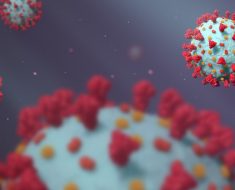In a recent study published in Scientific Reports, researchers assessed the importance of attention-deficit hyperactivity disorder (ADHD) features as a predictor of internalizing problems.

Autism spectrum disorder (ASD) is described as social-communication difficulties and repetitive and restrictive trends in behavior. Along with the fundamental symptoms of ASD, a significant amount of research has studied the links between mental health issues and AS, particularly internalizing disorders. Notably, internalizing issues have also been associated with lower life quality, physical health, and social activity in ASD, making them crucial intervention targets. ADHD is another neurodevelopmental illness related to internalizing disorders such as anxiety, obsessive-compulsive disorder (OCD), and depression. Yet, studies on internalizing issues and clinical practice place a much larger focus on ASD than ADHD.
About the study
In the present study, researchers investigated the distinct connections between self-reported ADHD and ASD features and internalizing issues.
Recruitment was conducted via Prolific, which yielded a representative sample of the United Kingdom's adult population, taking into account age and gender distributions. The sample included 504 people aged between 18 and 79 years. On the International Standard Classification of Education, participants indicated their age, gender, and education level between zero and seven. No additional data on clinical diagnosis was gathered.
The 28-item Short Autism-Spectrum Quotient (AQ-Short) evaluated social as well as non-social ASD features, yielding a score between 28 for a few autistic features and 112 for several autistic features. The AQ-Short can be used on both men and women. Additionally, Adult ADHD Self-Report Scale (ASRS) measured ADHD characteristics. Its 18 items reflected the frequency of symptoms associated with hyperactivity/impulsivity and inattention, with scores ranging from zero for no ADHD traits to 72 for several ADHD traits. Notably, in the present investigation, ASRS reliability was high.
The 7-Item Generalized Anxiety Disorder Scale (GAD-735) measured the frequency with which subjects had anxiety symptoms in the previous two weeks, resulting in a score between 0 for no anxiety and 21 for extreme anxiety. The 9-Item Depression Module of the Patient Health Questionnaire (PHQ-936) assessed depression symptoms frequency during the previous two weeks, yielding a score between 0 for no depression and 27 for severe depression.
Results
The study results noted that none of the data points observed were identified as multivariate outliers. Visual assessment of the Q-Q plot related to standardized residuals as well as a scatterplot comparing the standardized residuals with the standardized expected values, suggested that the assumptions of homoscedasticity and normality may have been violated.
Per the anticipated overlap between ADHD and ASD, intermediate correlations were detected between the features of ASD and ADHD. Anxiety and depression were linked with both ASD and ADHD features. Depression and anxiety also showed a strong correlation. To eliminate multicollinearity issues in the multivariate analysis, depression and anxiety were merged into a composite estimate of internalizing issues. Internalizing difficulties were associated with ASD as well as ADHD features.
Age, gender, and education level were factors in a multiple regression analysis examining the specific connections between ASD and ADHD features and internalizing issues. Internalizing issues were uniquely predicted by ASD and ADHD traits. The beta coefficients indicated that trait ADHD was a more accurate predictor than trait ASD. However, the team noted that comparing beta coefficients was insufficient to determine the relative significance of predictors.
As the most robust predictor of internalizing issues, ADHD features clearly surpassed ASD traits. The investigation also demonstrated that this bootstrapping-estimated dominance relationship had a 100% repeatability rate. This suggested that ADHD traits will always outweigh ASD features as a population-level predictor of internalizing issues.
The team also compared models incorporating the predictor of interest, that is, ADHD features or ASD traits, with null models comprising other variables. The Bayes Factors (BF10) classified ASD and ADHD characteristics as independent predictors of internalizing issues. There was "extreme" evidence that ADHD as well as ASD traits, predicted internalizing issues, although ADHD traits were considerably more significantly predicted than ASD traits. The overall trend of results was the same for anxiety as well as depression analyses.
Conclusion
The study findings indicated that ADHD and ASH specifically predicted internalizing disorders like depression and anxiety. Importantly, ADHD features were a significantly better predictor of internalizing issues, and this association is virtually guaranteed to exist across the entire population. While additional research is required to replicate these findings and clarify the processes behind the observed associations, this study presented vital new evidence relating to neurodevelopmental disorders and adult mental health.
- Hargitai, L.D., Livingston, L.A., Waldren, L.H. et al. (2023). Attention-deficit hyperactivity disorder traits are a more important predictor of internalising problems than autistic traits. Scientific Reports. doi: https://doi.org/10.1038/s41598-022-26350-4 https://www.nature.com/articles/s41598-022-26350-4
Posted in: Medical Science News | Medical Research News | Disease/Infection News
Tags: Anxiety, Anxiety Disorder, Autism, Depression, Education, Frequency, Hyperactivity, Inattention, Mental Health, Research

Written by
Bhavana Kunkalikar
Bhavana Kunkalikar is a medical writer based in Goa, India. Her academic background is in Pharmaceutical sciences and she holds a Bachelor's degree in Pharmacy. Her educational background allowed her to foster an interest in anatomical and physiological sciences. Her college project work based on ‘The manifestations and causes of sickle cell anemia’ formed the stepping stone to a life-long fascination with human pathophysiology.
Source: Read Full Article





